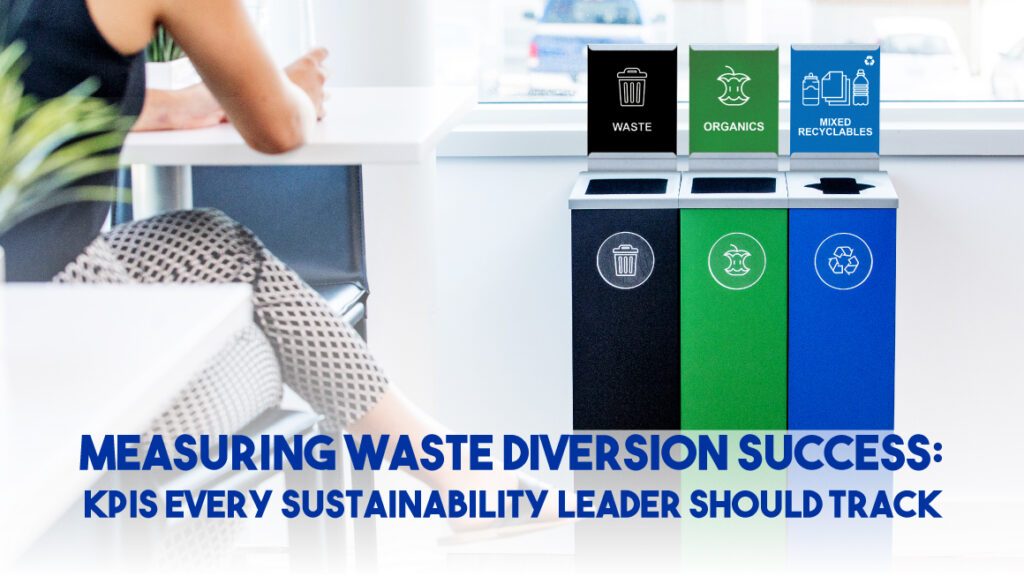What are Centralized Recycling & Waste Bins?
(Centralized Stations, High Traffic Containers)
Centralized Recycling & Waste Bins are the focal point of any collection program. If you’re looking to improve your program, you start by making sure you have the correct centralized stations set up around your space, both indoors and outdoors.

As previously mentioned, all Deskside Recycling & Waste Bins should inevitably be emptied into your centralized stations, whether it is by the individuals themselves, or the custodial staff. However, besides the Deskside Bin channel of refuse, Centralized Stations also collect all other non-deskside recycling and waste refuse directly making them the most important part of your collection program.
Centralized Recycling & Waste Bins come in a LARGE variety of different shapes, sizes and colors and this is due to the fact that every program’s needs are a little different. Also, Centralized — while being a great term to describe the flow of refuse throughout your program—is still a broad term when considering bin placement. The term Centralized, in regards to recycling & waste bins, covers all bin placements in the following, but not limited to, locations:
|
|
…you get the picture. Any recycling or waste bin (which specifically collects refuse, recyclables, compostables or reusable materials) that is not for personal or home use is considered a Centralized Station. And as you can imagine, for each of the above bin placement examples, each Station will have a drastically different set of needs.
Using a Subway Station as an example, the containers in this space may need an extremely high-capacity due to the amount of daily foot traffic. At the same time, they may also need to be bright and have clear concise signage, as the pace of the space only allows for a very short period of time for the user to walk by, see the container and dispose of their refuse in the correct stream. On top of that, it may be wise to maximize the number of streams due to the sheer variety of materials being disposed.
As you’re starting to picture, the process of deciding which Centralized Station is best for your program can be quite complex. However, if your team spends the time to do this correctly off the hop, you’ll eventually be able to reap the social and financial benefits as your program takes off.
Okay, so you’ve designed the ideal Centralized Recycling & Waste Bin Station for your program and have chosen the best placements throughout your space. People are using these stations, participation rates are high, contamination rates are low and the containers themselves are running at a manageable efficiency rate, woohoo!
But now the bins are almost full, uh oh…how do we transfer all of the refuse out of the bins? And where are we transferring them to? Transportation Recycling & Waste Bins.
To read about all the types of Recycling and Waste Bins, Click Here.


